Although the blue whale is the largest of all baleen whales it seems that the humpback whale (Megaptera novaeangliae) is the most popular, but maybe that’s just my personal assumption after seeing it plastered all over Christian Lassen school supplies in the 90’s. The toy market seems to back up my claim though, with Toy Animal Wiki cataloging several more humpback figures than blue whale. The popularity of the humpback makes sense though; it is a species of least concern with a circumpolar distribution, making it one of the easiest baleen whales to observe in the wild, and it often treats human spectators to fantastic acrobatic displays. Their haunting and complex songs are also popular, and I probably have a cassette of humpback songs somewhere, another byproduct of the 90’s. Humpbacks are also visually distinctive and easy to identify, with a unique arrangement of tubercles on the head and along the front edge of its long flippers.

Like most of the more popular animals for which an abundance of figures exists, choosing a humpback for my collection was tough. The Monterey Bay Aquarium figure by Safari is far and away the best of them all but now retired and becoming increasingly hard to find for a decent price. But there are several other decent figures that are still in production, including those by CollectA, Safari, Papo, and Mojo Fun. Interestingly, Schleich doesn’t have one currently in production, I suppose they’re about due! The one we’re looking at today is by Mojo Fun and I bought it mostly because it was on sale for $14.99 on Amazon, substantially lower than the normal retail price of $27.99. For that price it was worth taking a chance on it, most larger humpback figures are in the $30 price range.

This Mojo humpback should not be confused with their other humpback figure that is also in production. This one was released in 2012 and is product number 387119. The other figure, which is larger and uses the Maia & Borges sculpt, was released in 2017 and its product number is 387277. That figure has already been reviewed.
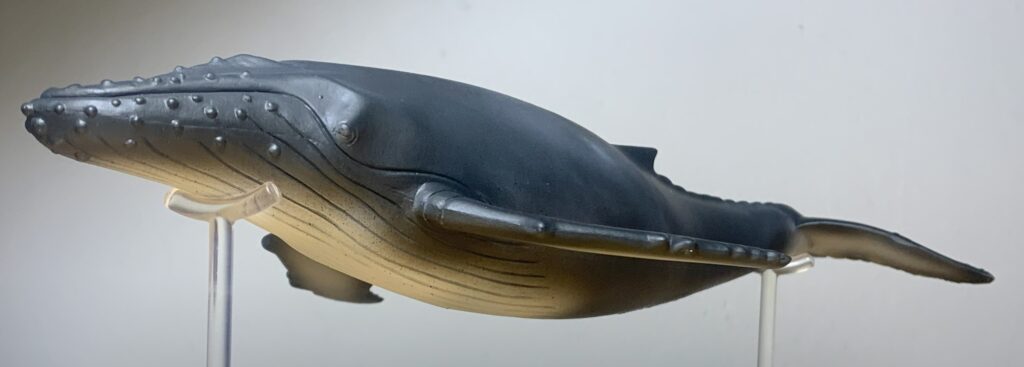
This humpback measures 9.5” (24.13 cm) from the tip of its jaw to the notch in the middle of its fluke. Adult humpbacks measure 52-56’ (16-17 meters) with males being slightly smaller than females. They’re the fifth largest species of whale. The figure comes out to be 1/65-1/70 in scale. That puts it a bit on the small side, even for my own collection, but I think I can live with it. The figure is in a static pose and resting on its belly, flippers out to the sides, and the tail lifted.
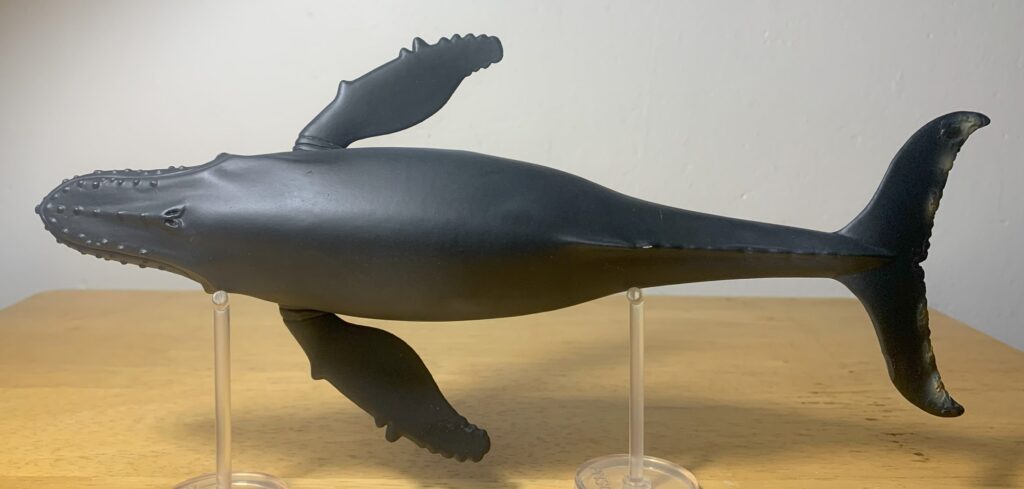
Having bought it on a whim I thought I might end up sending this figure back if I didn’t like it but I’m pleased to report that I do, despite the small size, and I’ll go ahead and keep it. The sculpting on the head is particularly good with many small tubercles and the angular edges of the skull can be seen protruding from under the skin. The skull appears U shaped when viewed from above or below, which is more accurate than the V shape of Mojo’s other humpback.
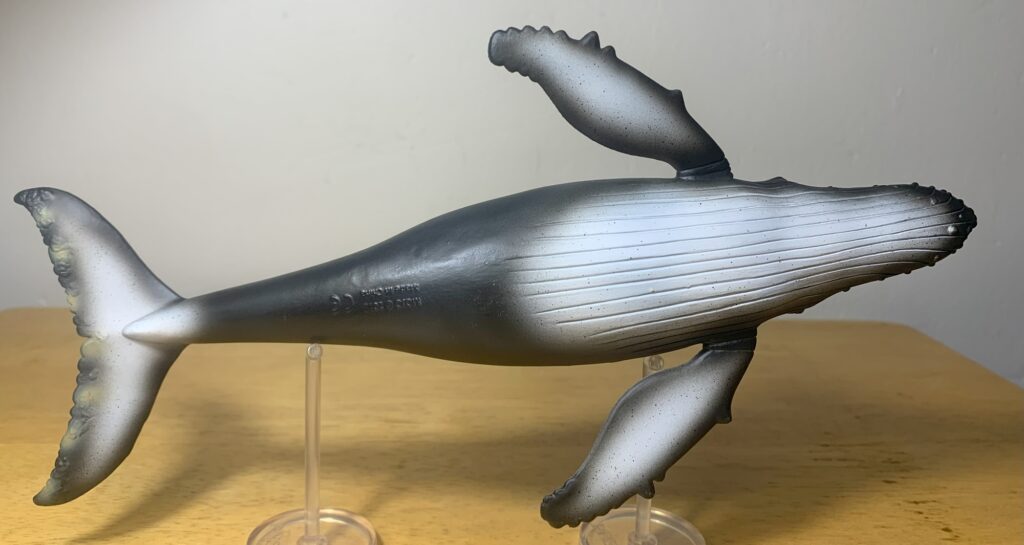
The narrow flippers are about 1/3rd the length of the body (the longest of any cetacean), with tubercles along the edge. In life the tubercles on the flippers act as “passive-flow control devices” which maintain lift, reduce drag, and just allow for an overall greater range of precision movement.
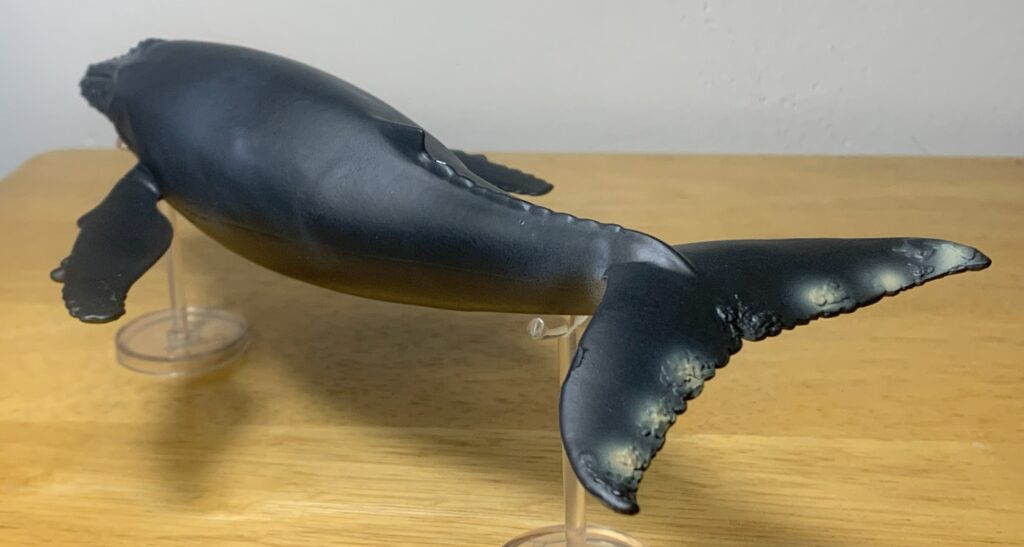
The small dorsal fin is located about 2/3rds of the way down the whale’s back with a knobby ridge of humps running down along the back behind it. Fifteen ventral pleats are sculpted running from the jaw to about where the navel would be. This is within the known range of 14-35 pleats that humpbacks can have. There is no genital slit. The fluke is broad with serrations along the trailing edge. Patches of barnacles are sculpted above and below the fluke and although I appreciate their presence, I would have liked it better if they were also sculpted on the head and flippers!
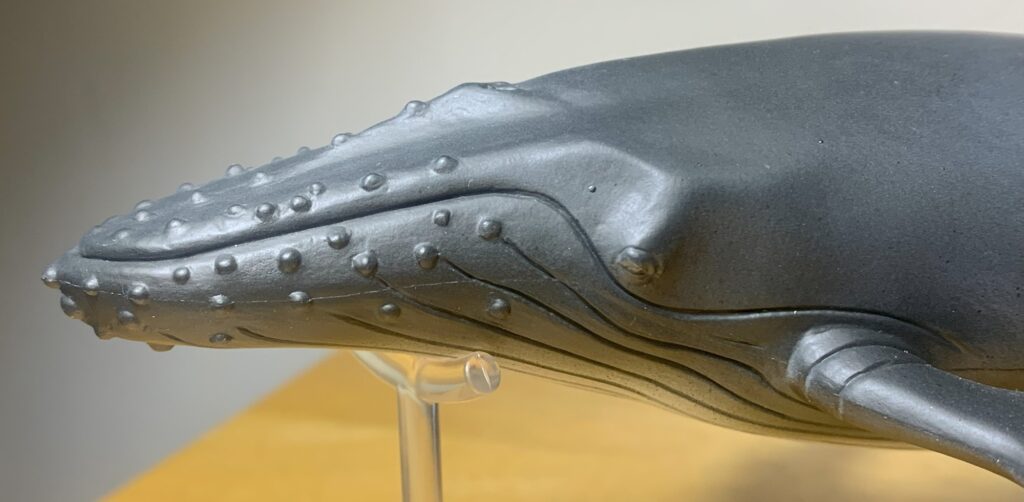
The figure is painted black with some white patches airbrushed along the underside of the flippers, belly, and fluke. Some brown splotches are painted on the leading edge of the fluke, and I think they’re meant to accentuate the barnacles, but they don’t exactly line up right. Since the ventral surface of the flippers are black it suggests that the Mojo humpback is representative of those from the north Pacific. Those in the southern hemisphere and north Atlantic tend to have white ventral surfaces on their flippers.
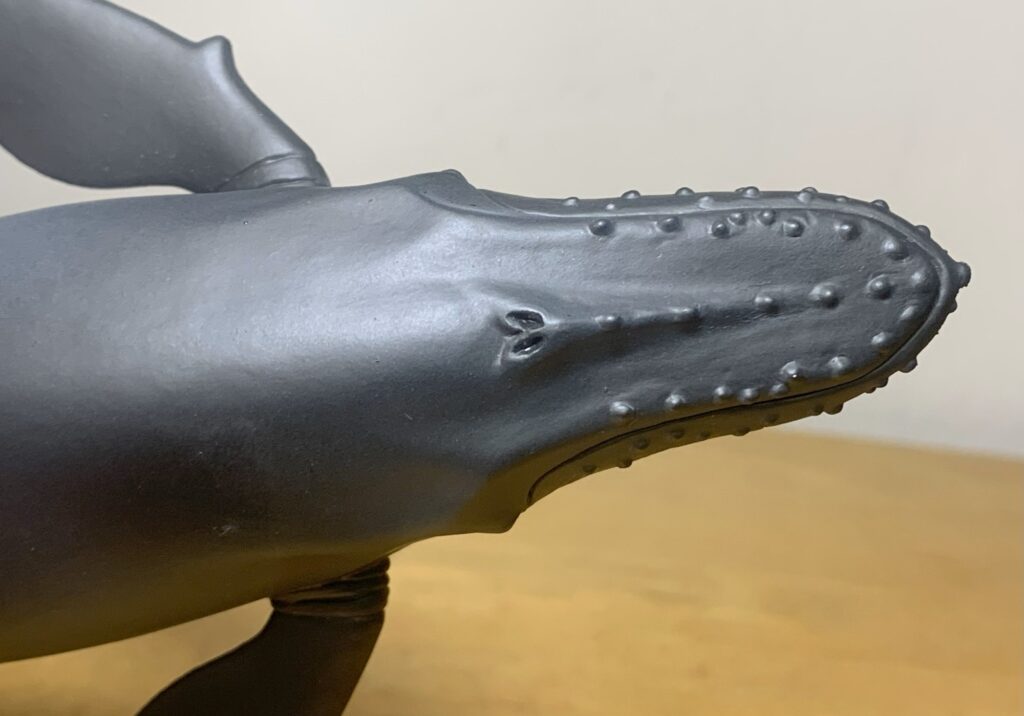
The paintjob is a bit minimal and probably my biggest complaint about the figure. Although the colors are correct, they’re more complex in life, with irregular demarcations between the black portions and the white and a degree of mottling. Flukes tend to be heavily patterned on the underside, to the point where individual whales can be identified by their unique combination of markings and scarring. When I was a kid I “adopted” a humpback whale named SOD (Scratches On Dorsal) through a mail-in kit and had the picture of her distinctively marked fluke hanging on my wall for many years. She was first sighted in 1979 and hasn’t been seen since 2003; I fear the worst for SOD.
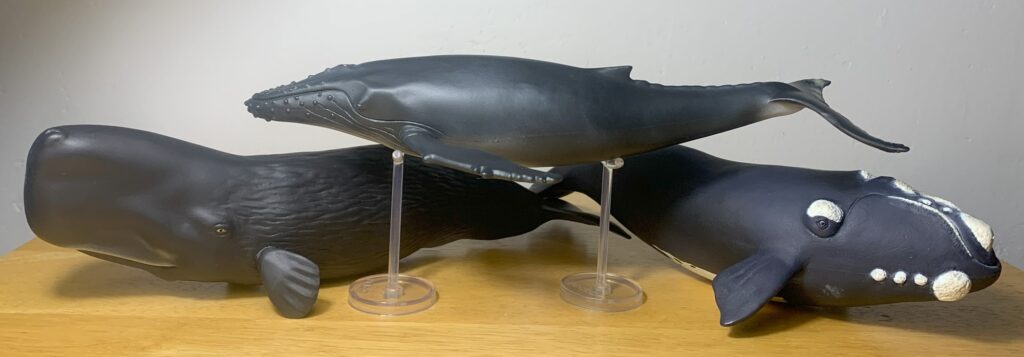
The Mojo humpback is simplified in many of the ways that Mojo figures usually are. It could have benefited from a more dynamic pose, finer details, and a more complex paintjob, but it is anatomically sound and a decent enough figure of the species. I still think the MBA humpback is superior and will likely replace this one with it if I ever come across it, but this one will due for now. It’s hard to recommend it for nearly $30 but I’m happy with the sale price I paid for it.
Disclaimer: links to Ebay and Amazon on the AnimalToyBlog are affiliate links, so we make a small commission if you use them. Thanks for supporting us!



